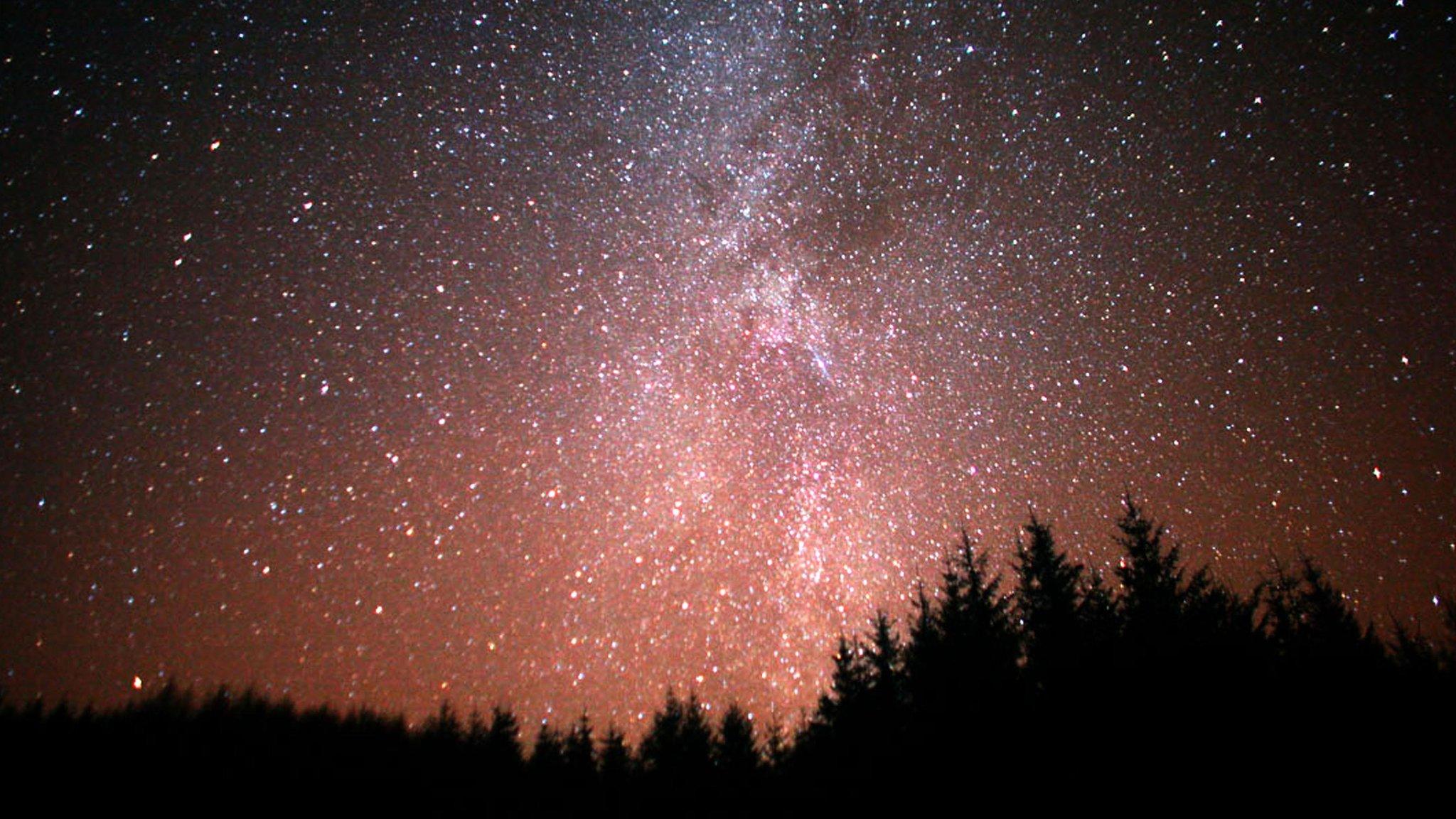Astronomers spot oldest and most distant galaxy, new study claims
- Published
- comments
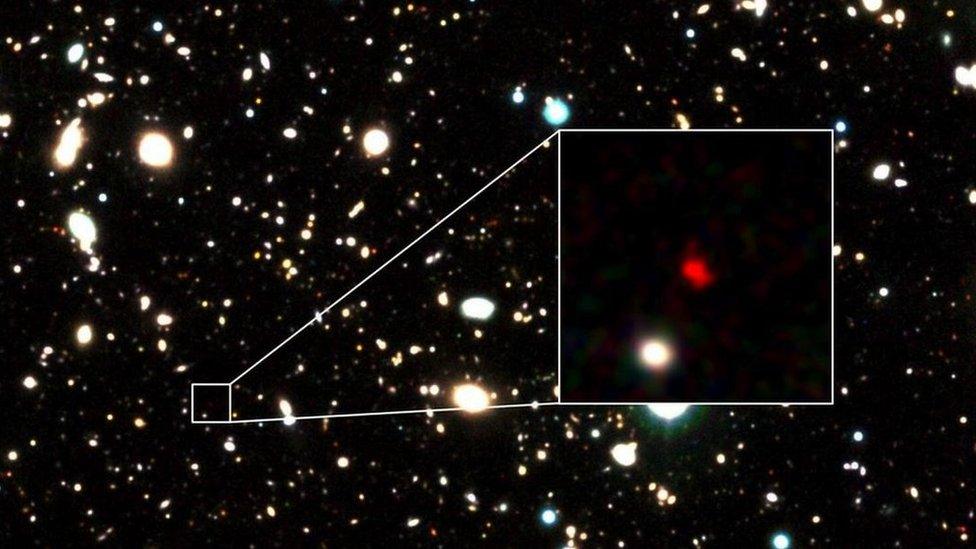
The distant early galaxy HD1, object in red, is shown at the centre of this image
Scientists have spotted what may be the oldest and most distant galaxy in the universe.
It's been named HD1 and is around 13.5 billion light years away from Earth.
Astronomers think it could be one of two things. Firstly, HD1 may be forming stars at a high rate and could even possibly be home to the universe's very first stars - known as Population III stars - which have never been observed before.
The other idea scientists suggest is that HD1 may contain a supermassive black hole about 100 million times the weight of the Sun.
What is a galaxy?
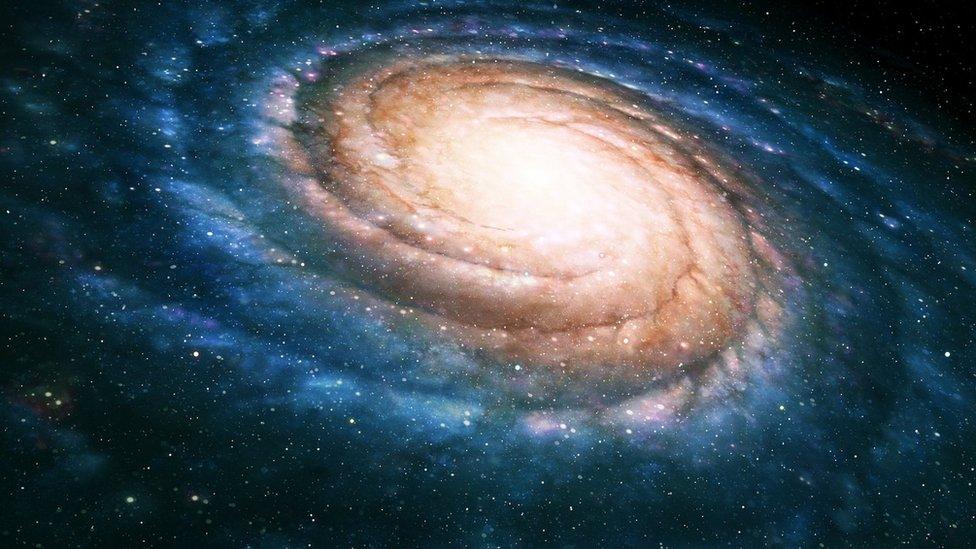
Artwork of a galaxy in space
Nasa defines a galaxy as "a huge collection of gas, dust, and billions of stars and their solar systems, all held together by gravity."
The one we live in is called the Milky Way. When you look up into the sky, all the stars and planets you can see also live with us in our galaxy.
HD1 is 13.5 billion light years away from Earth, and so you can only see it using specialist equipment.
It is extremely bright in ultraviolet light, according to the study,
A black hole is made when the centre of a very big star falls in upon itself, or collapses.
All the matter of the star becomes squeezed into a tiny space and the force of gravity increases greatly.
This pulls everything around the black hole towards it.
At first, the researchers assumed HD1 was a standard starburst galaxy - one that is creating stars at a high rate.
But a supermassive black hole could also explain the extreme brightness of HD1.
If that is the case it would be by far the earliest supermassive black hole known to humans.
Avi Loeb, an astronomer at the Centre for Astrophysics and co-author on the MNRAS study, said: "HD1 would represent a giant baby in the delivery room of the early universe."
How did scientists find it?
WATCH: How big is space? (March 2018)
HD1 was spotted after more than 1,200 hours of observing time with the Subaru Telescope, Vista Telescope, UK Infrared Telescope and Spitzer Space Telescope.
The team then carried out more investigations using the Atacama Large Millimetre Array (ALMA) - a giant radio telescope in the mountain desert of Chile - to confirm the distance.
Yuichi Harikane, an astronomer at the University of Tokyo who discovered it, said: "It was very hard work to find HD1 out of more than 700,000 objects."
HD1's red colour matched the expected characteristics of a galaxy 13.5 billion light-years away surprisingly well, giving me a little bit of goose bumps when I found it.
Soon the researchers will use the James Webb Space Telescope to again observe HD1 to check its distance from Earth.
If the scientists are correct, HD1 will be the most distant - and oldest - galaxy ever recorded.
The observation is described in the Astrophysical Journal with more details published in the Monthly Notices of the Royal Astronomical Society Letters (MNRAS).
- Published4 April 2022
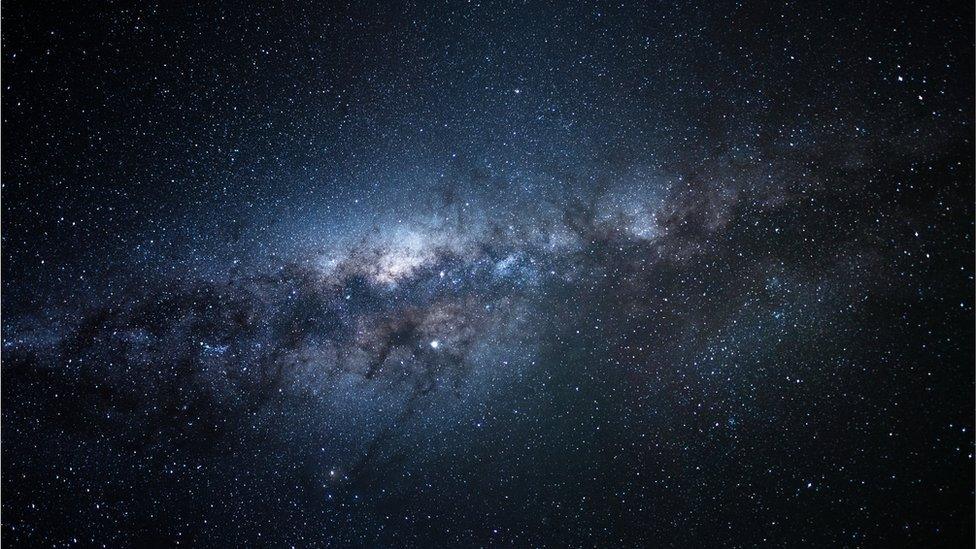
- Published4 October 2019
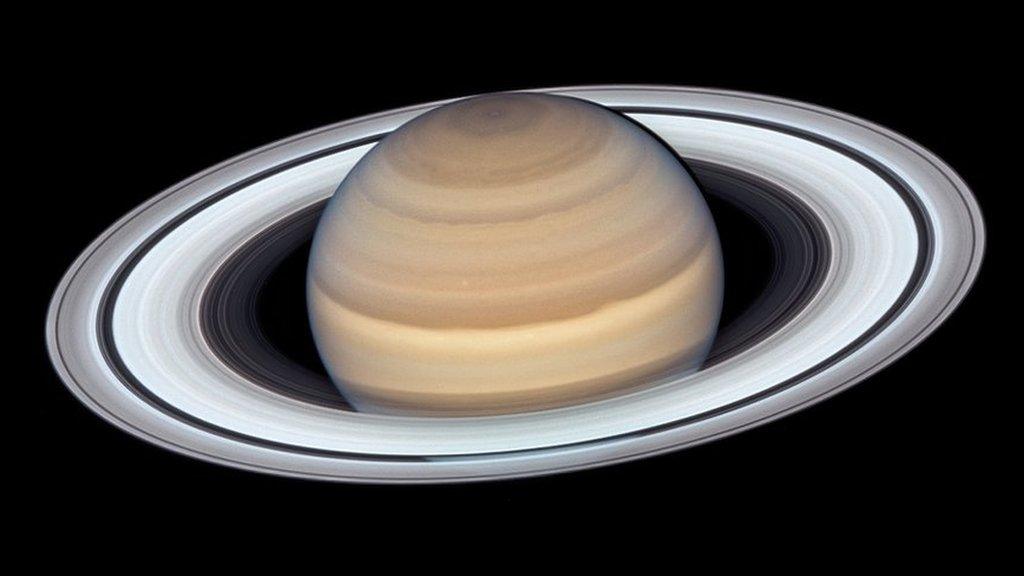
- Published15 June 2018
